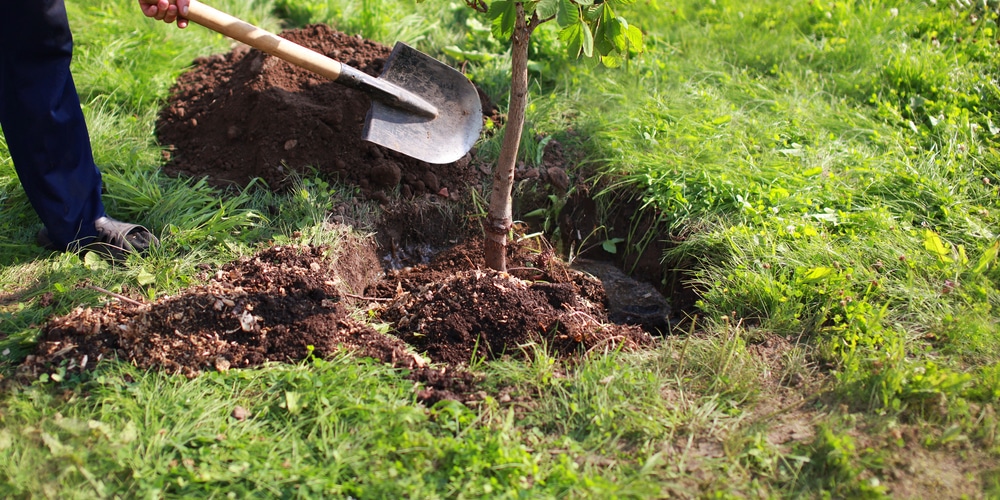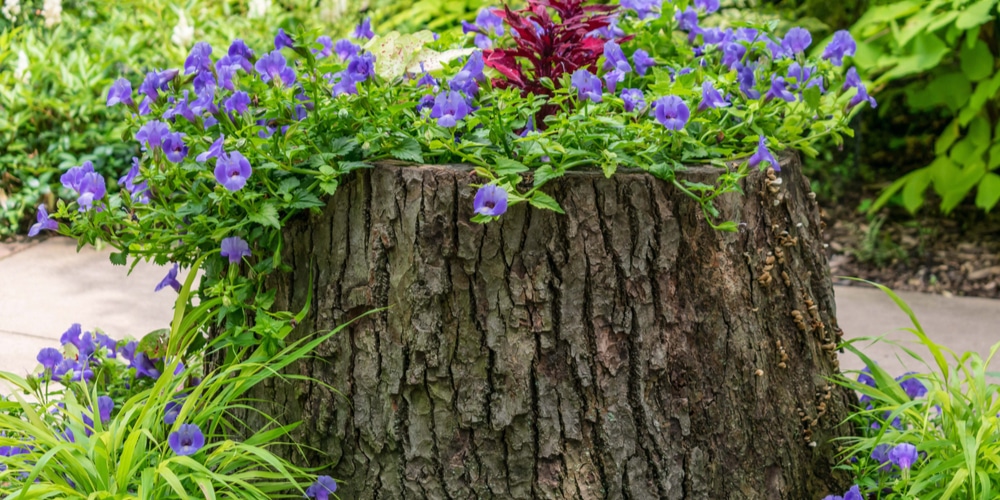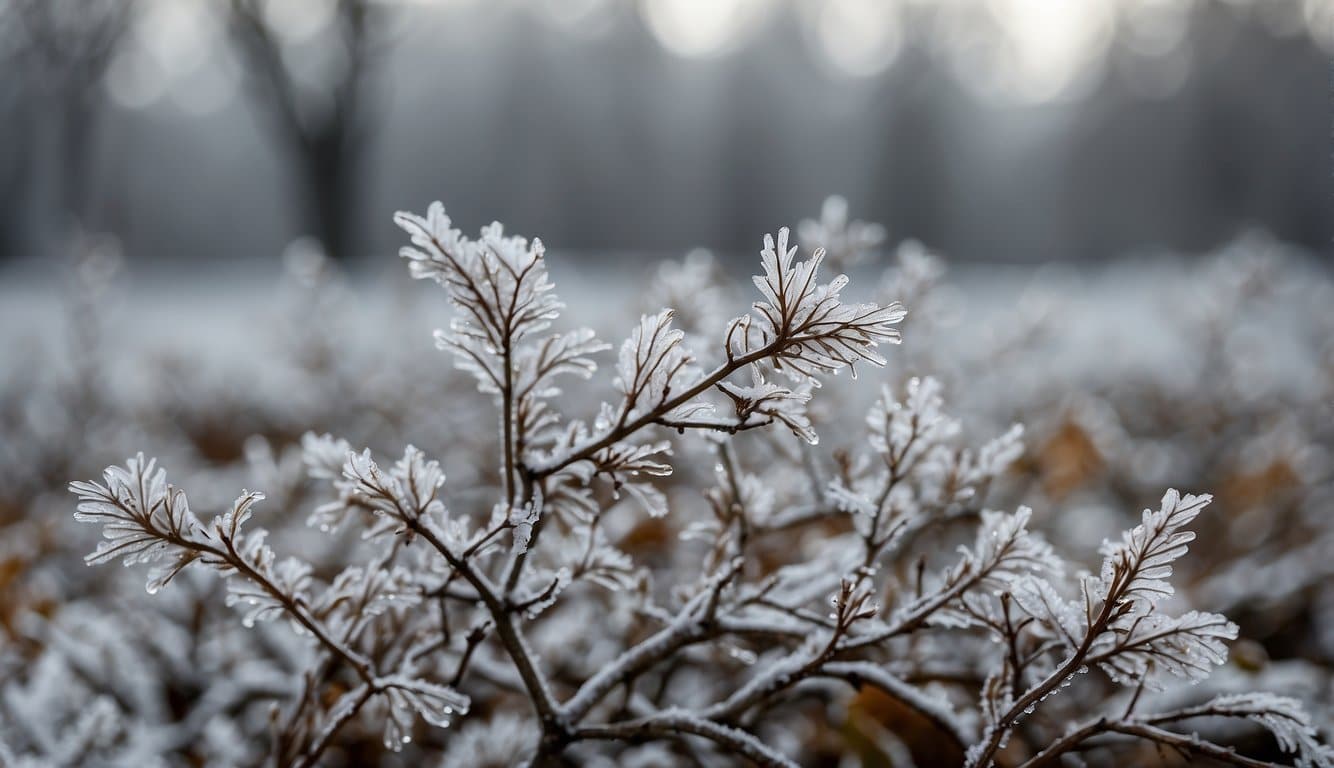Choosing the Right Tree Species
When planting trees in Illinois, it’s crucial to select species that thrive in the local climate and soil conditions.
Your aim should be to ensure the health and longevity of your trees by matching them to their ideal environment.
Assessing the Local Climate
Illinois spans several Plant Hardiness Zones, ranging from 5a in the northern regions to 7a in the southern parts of the state.
Your selection process should begin with determining the zone of your planting site, as this will directly influence which trees are feasible for your area. For example:
- Zone 5a: Opt for hardy species that can withstand cold, such as the Bur Oak or American Hophornbeam.
- Zone 7a: You may choose trees like the Southern Magnolia, which prefer milder winters.
Different Trees Like Different Soil Conditions
Soil properties greatly affect tree health.
Three main factors to consider are:
- Soil pH: This determines nutrient availability. Illinois soils can vary from acidic to alkaline; you should have your soil tested to guide your tree species selection.
- Soil drainage: Proper drainage is essential. Trees like willows prefer wet soils, while others, such as white oak, require well-drained sites.
- Moisture requirements: Match the tree’s water needs with your soil’s moisture level for best growth outcomes.
Selecting Native Trees
Choosing native trees increases the likelihood of successful establishment as these species are adapted to Illinois’s environment.
Some native trees to consider include:
- For shade: White Oak (Quercus alba)
- For wet areas: Bald Cypress (Taxodium distichum)
- For wildlife: Serviceberry (Amelanchier arborea)
Native trees generally require less maintenance, as they are well-suited to the local climate and pests, and they often contribute positively to the local ecosystem.
Best Planting Practices
Enhance the longevity of your trees in Illinois by following these fundamental planting tips, which will set the cornerstone for a tree’s health and growth.
Determining the Ideal Planting Time
To optimize the success rate of your tree planting endeavors, timing is crucial.
In Illinois, the prime tree planting seasons are spring and autumn. You should avoid the extremes of summer heat and winter cold, as these can stress a young tree.
Tree Planting Techniques
Proper planting technique is vital for tree establishment:
- Root Inspection: Before planting, inspect the roots and prune any that are circling to encourage outward growth.
- Planting Depth: Ensure the top of the root ball is slightly above ground level to prevent water pooling around the base.
- Straight Positioning: Once in the ground, straighten the tree so it grows upright, which is essential for proper root spread and trunk development.
Watering and Mulching
After planting, your tree will need consistent care:
- Watering: Especially during the first two years, water your tree every 7-10 days, adjusting based on rainfall.
- Mulching: Apply a 2 to 3 inch layer of organic mulch around the tree, extending it to the drip line to help retain soil moisture and regulate temperature.
Tree Spacing and Placement
Proper placement and spacing are crucial for the health and growth of your trees. You’ll need to consider available sunlight, the potential for root competition, and how you want your landscape to look and function.
Considering Sunlight and Space
When planting trees in Illinois, always assess your site’s exposure to sunlight.
Most deciduous trees, including fruit trees, perform best with a spacing of 10 to 15 feet apart. This allows ample sunlight to reach each tree and promotes healthy growth.
Conifers, which are generally larger, should be spaced further apart, typically 15 to 25 feet. Additionally, remember to consider the mature size of the trees to prevent future overcrowding.
Preventing Root Competition
Root competition can be a serious issue which inhibits tree growth. Space your trees properly to avoid this. Here’s an appropriate guideline:
- For smaller trees, maintain a distance equal to at least three times the width of the tree’s root ball.
- For larger trees, increase this to a distance equal to five times the width of the tree’s root ball.
This spacing helps to ensure that your trees have enough room to establish their root systems without interference from neighboring plants.
Maximizing Aesthetic Appeal and Functionality
To maximize the appeal and practical utility of your trees:
- Visual Balance: Plant trees at varying distances but in a pattern that is pleasing to the eye.
- Functionality: Consider how the fully grown trees will interact with your space. Will they provide shade where you want it? Might they obstruct views or interfere with structures?
Keep in mind the ultimate purpose of your trees. Whether for privacy, shade, or simply aesthetic value, place them intentionally to fulfill these roles effectively as they grow.
Maintenance and Care
Effective tree maintenance and care are pivotal for your tree’s longevity and vitality in Illinois. Let’s focus on pruning for structural integrity, managing pests and diseases that frequently affect local species, and adhering to a fertilization schedule tailored to your tree’s needs.
Pruning and Trimming
Proper pruning and trimming are essential to maintain your tree’s health and shape.
In Illinois, the best time to prune trees is late winter or early spring before the growing season begins.
- When Pruning:
- Remove dead, damaged, or weak branches to prevent the spread of disease.
- Trim dense foliage to improve sunlight penetration and air circulation.
- Ensure cuts are clean and made at a 45-degree angle to promote healing.
Disease and Pest Management
Pests and diseases can pose significant threats to trees in Illinois. Frequent inspection is key to early detection and management.
- Common Signs of Disease or Pest Infestations:
- Discolored leaves or needles
- Visible insects or larvae on the tree or in the soil
- Wilted or distorted foliage
Management Tips:
- Apply appropriate fungicides or insecticides when necessary—follow the manufacturer’s guidelines and local regulations.
- Encourage beneficial insects that act as natural pest control.
- Remove and destroy infected plant material to contain the spread.
Fertilization Schedule
A regular fertilization schedule helps to replenish nutrients and promote healthy growth.
Trees in Illinois may require different nutrients based on the soil composition and species.
- Considerations for Fertilizing:
- Perform a soil test to determine nutrient needs.
- Fertilize in the early spring or late fall when the tree is dormant.
- Use a slow-release fertilizer to provide a steady supply of nutrients.
Supporting Sustainable Growth
When planting trees in Illinois, sustainable growth involves more than just putting trees in the ground. It encompasses strategies like conserving water, promoting biodiversity, and committing to long-term tree health monitoring to ensure the planted trees thrive for years to come.
Conserving Water
- Mulching: Apply a 2 to 3-inch mulch ring around your tree to retain moisture.
- Watering schedule: Provide water every 7-10 days, adjusting based on rainfall.
By conserving water, you’re not only saving this precious resource but also creating an environment where your trees can establish their roots and grow strong.
Promoting Biodiversity
- Plant Hardiness Zones: Choose trees suitable for Illinois’ zones, ranging from 6a to 7a in the south and 5a to 5b in the north.
- Shade Tolerance: Select trees like Bur Oak or Cottonwood, which have a higher tolerance for the varying sun exposure.
Biodiversity ensures a balanced ecosystem, and by selecting the right trees, you contribute to environmental health and resilience.
Long-Term Tree Health Monitoring
- Inspect your trees frequently, especially during the first two years.
- Address any issues promptly, including pests or diseases.
Frequently Asked Questions
When diving into tree planting, it’s essential to understand both the practical steps and the local environmental specifics that impact tree health and growth.
What are the crucial steps for properly planting a tree?
To properly plant a tree, you should dig a hole that’s twice as wide as the root ball and just as deep, allowing room for root expansion.
After positioning the tree, refill the hole with the original soil, water it thoroughly, apply a 2-3 inch layer of mulch around the base, but not touching the trunk, and provide regular water every 7-10 days without rainfall.
What climatic factors should be taken into account when planting trees in Illinois?
In Illinois, understanding Plant Hardiness Zones is key. These zones range from 5a in the north to 7a in the south and affect what tree species can thrive.
Additionally, sun exposure and shade tolerance are crucial factors that vary across tree species; some, such as Bur Oak and Cottonwood, are more sun tolerant.
What soil preparation is needed before planting trees in this region?
Prior to planting, ensure the soil is well-drained and aerated.
Amend heavy clay soils, often found in Illinois, with organic matter to improve structure.
A soil pH test may be necessary, as most trees favor a slightly acidic to neutral pH.
How should young trees be maintained after planting in Illinois’ environment?
After planting, follow consistent watering practices, especially during dry spells.
Inspect your tree frequently for the first two years, providing water every 7-10 days in absence of sufficient rainfall. Avoid over-fertilizing, which can harm young trees.
Can you outline the tree planting seasons suitable for Illinois?
The ideal planting periods in Illinois are during the dormant seasons—fall after leaf drop and early spring before bud break.
Planting at these times allows roots to establish before the stress of extreme temperatures and dry conditions in summer.
What are the common mistakes to avoid when planting a tree?
Avoid planting trees too deep or too shallow, which can stress the tree and stunt growth.
Excessive mulch against the tree trunk can cause rot, while under or overwatering can lead to poor root health.
Finally, selecting a tree unsuited for your specific Plant Hardiness Zone can result in poor tree development.
Last update on 2025-04-01 / Affiliate links / Images from Amazon Product Advertising API





